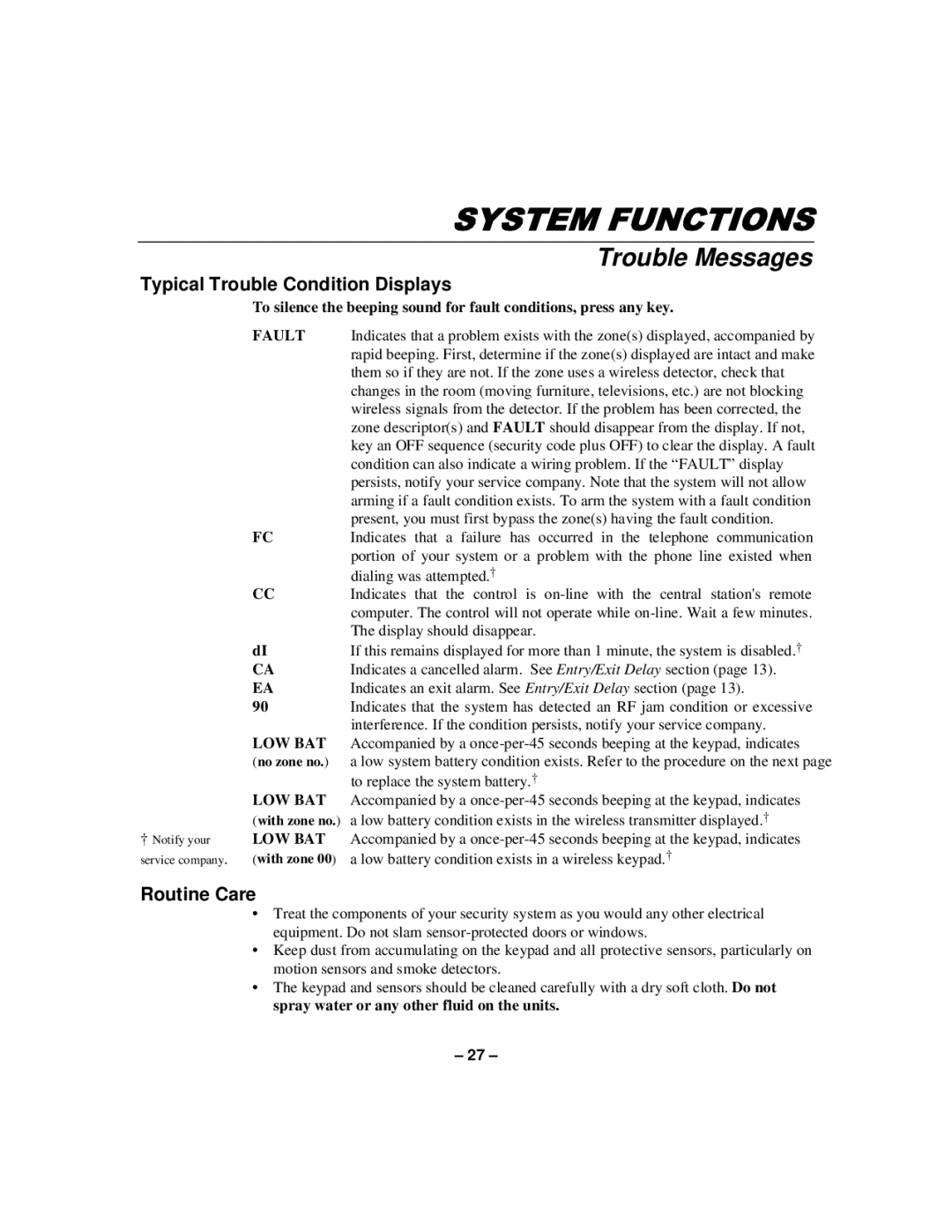N8891-1 specifications
The First Alert N8891-1 is a technologically advanced smoke and carbon monoxide (CO) alarm that exemplifies safety and efficiency for modern homes. Designed to provide comprehensive protection against two of the most hazardous threats in residential environments, this device is engineered with an array of features that enhance its functionality and user-friendliness.One of the standout features of the N8891-1 is its dual-sensor technology. This method combines both photoelectric and ionization sensing capabilities, allowing the alarm to effectively detect a wide range of fire types. Photoelectric sensors are particularly effective for smoldering fires, which may produce more smoke and take longer to ignite, while ionization sensors quickly respond to flaming fires. This combination ensures that users receive timely warnings, enhancing safety and increasing the chances of escape.
The First Alert N8891-1 is also equipped with a unique, easy-to-read digital display that provides real-time data about CO levels in the home. This feature is crucial, as carbon monoxide is an odorless and colorless gas that can be extremely harmful, if not fatal. The display not only indicates the current CO level but also provides users with alerts in case of an emergency or when the battery is low.
In addition to its advanced sensing capabilities, the N8891-1 includes a 10-year sealed battery, eliminating the need for frequent battery replacements and ensuring long-lasting performance. This feature provides peace of mind, knowing that the device will remain operational without the hassle of upkeep.
Another important characteristic is the alarm’s ability to interlink with other compatible smoke alarms in the household. When one alarm detects smoke or CO, all linked units will sound off, creating a synchronized response that further enhances safety throughout the home.
Furthermore, the First Alert N8891-1 is designed with user convenience in mind, featuring a single button for both testing the alarm and silencing false alarms, which can often occur when cooking or from other non-threatening sources.
Overall, the First Alert N8891-1 stands out as a reliable and sophisticated choice for those seeking to enhance their home’s safety features with a dual-function smoke and carbon monoxide detector that seamlessly combines advanced technology, ease of use, and sustainability.
